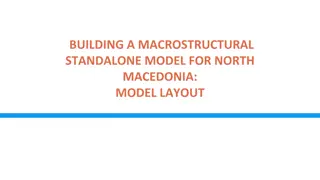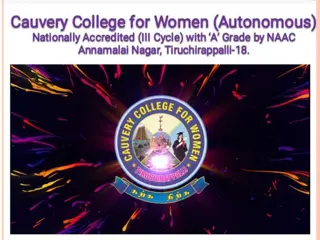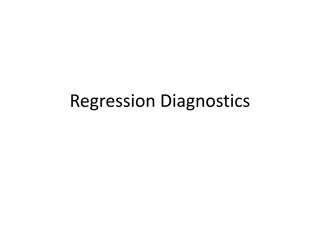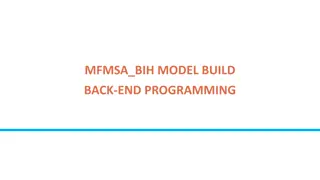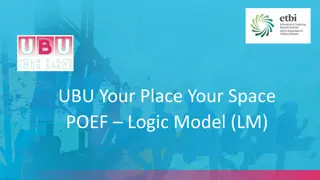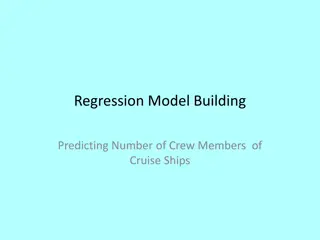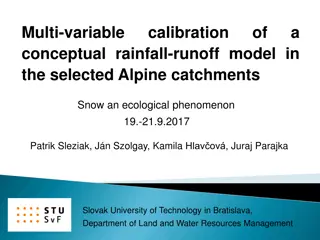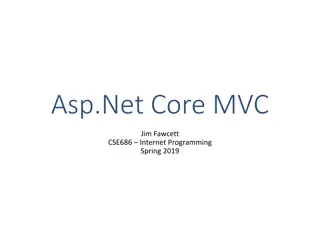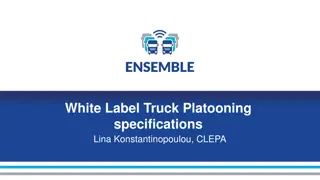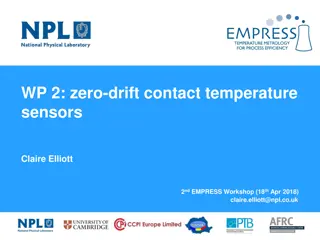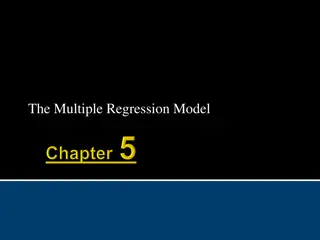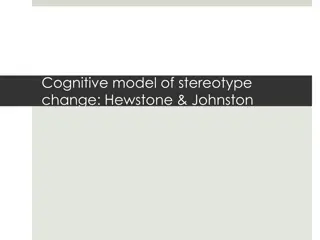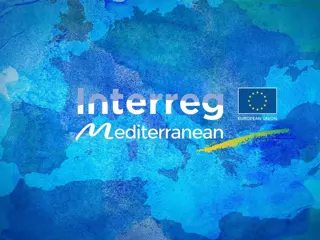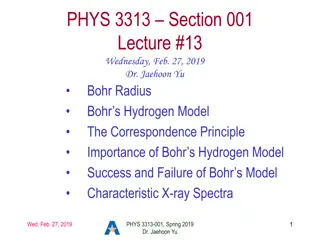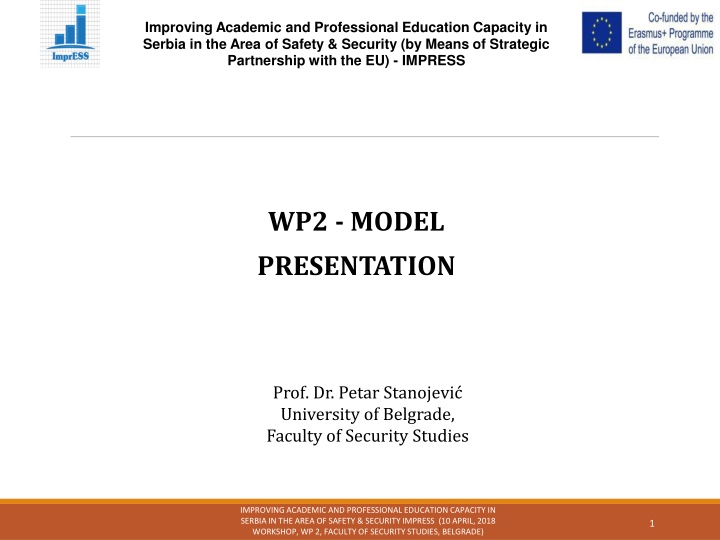
Improving Academic and Professional Education Capacity in Serbia - IMPRESS Model Presentation
Enhance academic and professional education capacity in Serbia's safety and security domain through strategic EU partnership. Explore the role of scientific modeling, theoretical models, and key objectives for effective implementation.
Download Presentation

Please find below an Image/Link to download the presentation.
The content on the website is provided AS IS for your information and personal use only. It may not be sold, licensed, or shared on other websites without obtaining consent from the author. If you encounter any issues during the download, it is possible that the publisher has removed the file from their server.
You are allowed to download the files provided on this website for personal or commercial use, subject to the condition that they are used lawfully. All files are the property of their respective owners.
The content on the website is provided AS IS for your information and personal use only. It may not be sold, licensed, or shared on other websites without obtaining consent from the author.
E N D
Presentation Transcript
Improving Academic and Professional Education Capacity in Serbia in the Area of Safety & Security (by Means of Strategic Partnership with the EU) - IMPRESS WP2 - MODEL PRESENTATION Prof. Dr. Petar Stanojevi University of Belgrade, Faculty of Security Studies IMPROVING ACADEMIC AND PROFESSIONAL EDUCATION CAPACITY IN SERBIA IN THE AREA OF SAFETY & SECURITY IMPRESS (10 APRIL, 2018 WORKSHOP, WP 2, FACULTY OF SECURITY STUDIES, BELGRADE) 1
Improving Academic and Professional Education Capacity in Serbia in the Area of Safety & Security (by Means of Strategic Partnership with the EU) - IMPRESS Model: Definition (1) Scientific modelling is a scientific activity, the aim of which is to make a particular part or feature of the world easier to understand, define, quantify, visualize, or simulate by referencing it to existing and usually commonly accepted knowledge [1,2]. It requires selecting and identifying relevant aspects of a situation in the real world and then using different types of models for different aims, such as conceptual models to better understand, operational models to operationalize, mathematical models to quantify, and graphical models to visualize the subject. Cartwright, Nancy. 1983. How the Laws of Physics Lie. Oxford University Press 1. Hacking, Ian. 1983. Representing and Intervening. Introductory Topics in the Philosophy of Natural Science. Cambridge University Press 2. Box, George E.P. & Draper, N.R. (1987). [Empirical Model-Building and Response Surfaces.] Wiley. p. 424 IMPROVING ACADEMIC AND PROFESSIONAL EDUCATION CAPACITY IN SERBIA IN THE AREA OF SAFETY & SECURITY IMPRESS (586410-EPP-1- 2017-1-RS-EPPKA2-CBHE-JP (2017-3214/001-001)) 2
Improving Academic and Professional Education Capacity in Serbia in the Area of Safety & Security (by Means of Strategic Partnership with the EU) - IMPRESS Theoretical model`s role Model, when implemented properly, should satisfy four fundamental objectives [5]: Enhance an individual's understanding of the representative system Facilitate efficient conveyance of system details between stakeholders Provide a point of reference for system designers to extract system specifications Document the system for future reference and provide a means for collaboration 5. C.H. Kung, A. Solvberg, Activity Modeling and Behavior Modeling, In: T. Ollie, H. Sol, A. Verrjin-Stuart, Proceedings of the IFIP WG 8.1 working conference on comparative review of information systems design methodologies: improving the practice. North-Holland, Amsterdam (1986), pp. 145 71 IMPROVING ACADEMIC AND PROFESSIONAL EDUCATION CAPACITY IN SERBIA IN THE AREA OF SAFETY & SECURITY IMPRESS (586410-EPP-1- 2017-1-RS-EPPKA2-CBHE-JP (2017-3214/001-001)) 3
Improving Academic and Professional Education Capacity in Serbia in the Area of Safety & Security (by Means of Strategic Partnership with the EU) - IMPRESS Assumptions and Risks Assumptions: It is possible to form sector skill alliance between HEI from program and partner countries. Dual diploma and joint study programs are possible Legal framework and instruments can be developed Risks: Accreditation process can be too long Legal issues cannot be resolved IMPROVING ACADEMIC AND PROFESSIONAL EDUCATION CAPACITY IN SERBIA IN THE AREA OF SAFETY & SECURITY IMPRESS (586410-EPP-1- 2017-1-RS-EPPKA2-CBHE-JP (2017-3214/001-001)) 4
Improving Academic and Professional Education Capacity in Serbia in the Area of Safety & Security (by Means of Strategic Partnership with the EU) - IMPRESS Model development IMPROVING ACADEMIC AND PROFESSIONAL EDUCATION CAPACITY IN SERBIA IN THE AREA OF SAFETY & SECURITY IMPRESS (586410-EPP-1- 2017-1-RS-EPPKA2-CBHE-JP (2017-3214/001-001)) 5
Improving Academic and Professional Education Capacity in Serbia in the Area of Safety & Security (by Means of Strategic Partnership with the EU) - IMPRESS Modeling Simuland: Higher Educational System (Serbian and EU) Requirements: To allow joint development and execution of study progammes or modules between Serbian and Serbian and EU partners. To innovate and create new study programmes, modules, courses and trainings To define shortcomings and limitations To allow implementation / to be executable Validation: Through fulfilment of requirements Verification: Through implementation The event-driven process chain (EPC) or Logico-linguistic modeling are thepossibleconceptual modeling techniques. IMPROVING ACADEMIC AND PROFESSIONAL EDUCATION CAPACITY IN SERBIA IN THE AREA OF SAFETY & SECURITY IMPRESS (586410-EPP-1- 2017-1-RS-EPPKA2-CBHE-JP (2017-3214/001-001)) 6
Level 8 Doctoral academic studies Doctoral academic studies 180 ESPB Level 7.2 Vocatioanal academic studies Vocatioanal academic studies 60 ESPB Level 7.1 Master studies Master academic studies 60 or 120 ESPB Integrated academic studies 300-360 SPB Master spec. studies 120 SPB Courses with or without ESPB Level 6.2 Basic academic studies and vocational studies Basic academic studies 240 ESPB Vocational studies 60 SPB Level 6.1 Basic studies Basic vocational studies 180 ESPB Basic academic studies 180 ESPB Level 4 (duration 4 years) Secondary education No legal constrains on joint cooperation and programmes from 6.1 to 8. Level 1 (duration 8 years) Primary education IMPROVING ACADEMIC AND PROFESSIONAL EDUCATION CAPACITY IN SERBIA IN THE AREA OF SAFETY & SECURITY IMPRESS (586410-EPP-1-2017-1-RS-EPPKA2-CBHE-JP (2017-3214/001-001)) 7
Determination of the possible Common Issue/s and Interest Pathway for establishment of the knowledge and skills alliance Exploration and finding partners Assessment of the Common Goals, KPI, Timeframe etc. for Cooperation Event-driven process chain (EPC) model Executive/project teams establishment Preliminary determination of needed resources and legal frame Contracting Legal framevork Equipment, Staff, Curricula and Methodology Assessment Change in internal organization, regulations etc. on the partners side if needed Resources procurement if needed Staff Training and Mobility if needed Accreditation if needed Execution Achievements Evaluation IMPROVING ACADEMIC AND PROFESSIONAL EDUCATION CAPACITY IN SERBIA IN THE AREA OF SAFETY & SECURITY IMPRESS (586410-EPP-1- 2017-1-RS-EPPKA2-CBHE-JP (2017-3214/001-001)) 8
Improving Academic and Professional Education Capacity in Serbia in the Area of Safety & Security (by Means of Strategic Partnership with the EU) - IMPRESS THANK YOU FOR YOUR ATTENTION IMPROVING ACADEMIC AND PROFESSIONAL EDUCATION CAPACITY IN SERBIA IN THE AREA OF SAFETY & SECURITY IMPRESS (586410-EPP-1- 2017-1-RS-EPPKA2-CBHE-JP (2017-3214/001-001)) 9

